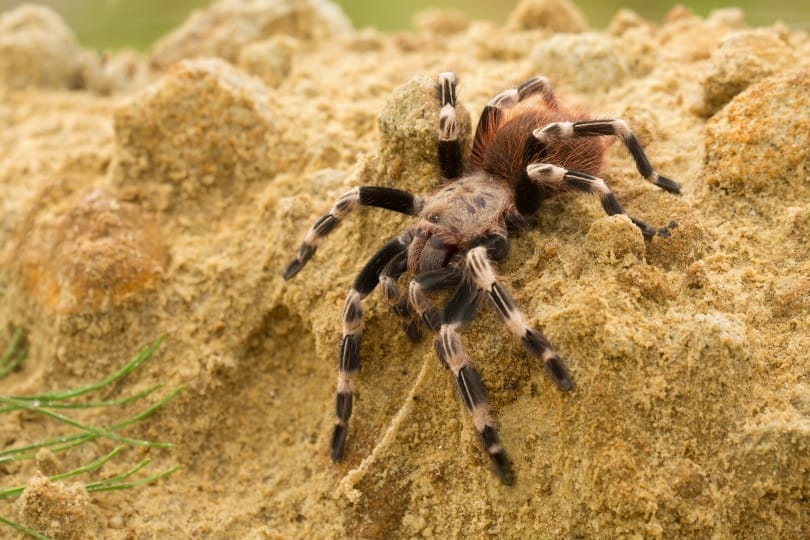Colorado has diverse ecological and topographical conditions ranging from snowy mountains to arid deserts and canyons. It also has several large cities and towns.
While there hasn’t been a single recorded snakebite death in the 21st Century, there are several species of poisonous spiders in Colorado, including black widows and the brown recluse, as well as the less venomous but equally infamous tarantula.
Colorado certainly isn’t lacking in arachnids: read on for 18 of the most common.

The 18 Spiders Found in Colorado
1. Southern Black Widow

| Species: | Latrodectus mactans |
| Longevity: | 1-3 years |
| Good to own as a pet?: | Potentially |
| Legal to own?: | Yes |
| Adult size: | 3.5-5 cm |
| Diet: | Carnivorous |
The Southern Black Widow is a shiny black spider. It has a recognizable red hourglass shape on its abdomen, although the exact shape of the marking can differ slightly and there are some instances of black widows with no marking and males do not have the hourglass at all.
Females can measure up to 5cm, while the much smaller male only measures approximately 0.5cm. Males and young spiders are harmless to humans, but the female venom contains a neurotoxin called alpha-latrotoxin that causes considerable pain for up to 48 hours.
Although care does need to be taken, the Black Widow can make a good pet. Feeding and tank maintenance are easy, but it is a venomous species. Ensure the tank is not too busy with décor so that you can see where the spider is at all times.
2. Northern Black Widow

| Species: | Latrodectus variolus |
| Longevity: | 1-3 years |
| Good to own as a pet?: | Potentially |
| Legal to own?: | Yes |
| Adult size: | 5-10 mm |
| Diet: | Carnivorous |
The Northern Black Widow is similar to the Southern. Its toxin is very strong, approximately 15 times more toxic than a rattlesnake’s. Because they only inject a small amount, widow bites rarely prove fatal and even more rarely to adults.
There is some difference to the markings of the Northern Black Widow when compared to its Southern counterpart. The red hourglass is usually incomplete in this subspecies, with a gap in the middle. The Northern Black Widow may also have white stripes on its abdomen. Although the female black widow is known for eating the male after mating, this happens only rarely.
These predators only need to eat every couple of weeks and can be fed a variety of insects including mosquitos, ants, and flies.
3. Brown Recluse Spider
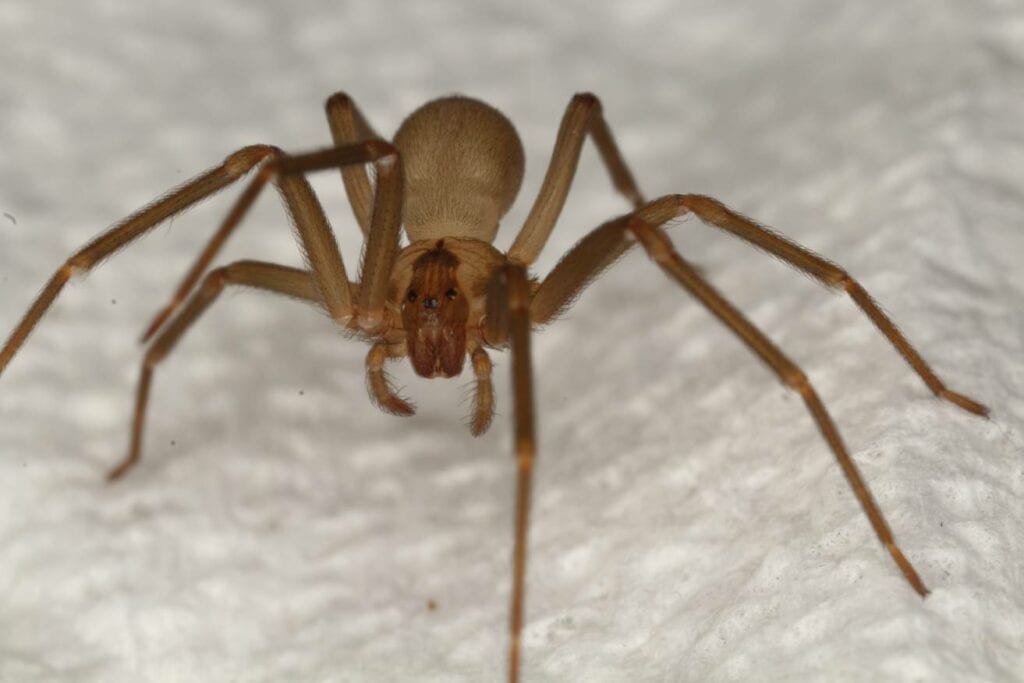
| Species: | Loxosceles reclusa |
| Longevity: | 1-2 years |
| Good to own as a pet?: | Potentially |
| Legal to own?: | Yes |
| Adult size: | 6-12 mm |
| Diet: | Carnivorous |
The Brown Recluse is a small recluse spider that is primarily brown. It is rarely found in Colorado and is most significant for the fact that various other species are regularly mistaken for the brown recluse. The brown recluse is the only one of these species that has three pairs of eyes, but the eyes are small and may require magnification to identify.
The venom of the brown recluse is rarely fatal. However, it does contain a toxin that breaks down cell walls and can leave you with an open wound around the bite site.
If you intend to keep one as a pet, be aware that the venom can be fatal to dogs and cats, so ensure that pets are kept out of the way when maintaining the tank.
4. Yellow Sac Spider
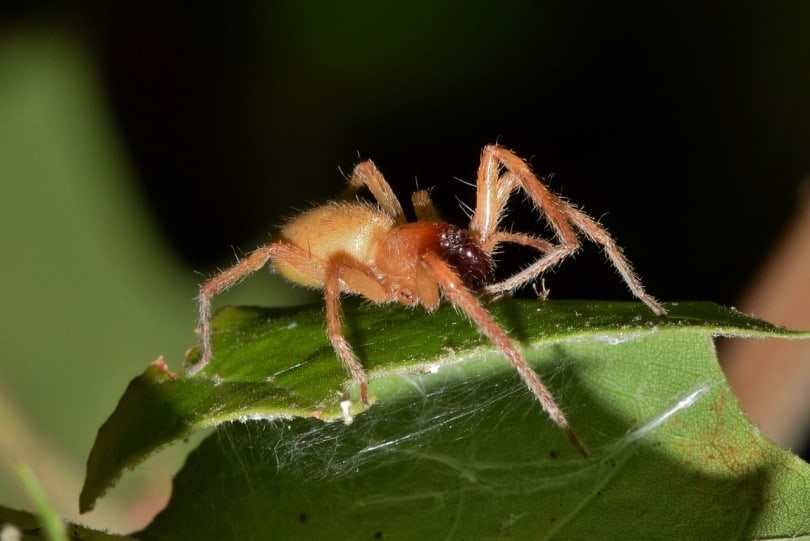
| Species: | Cheiracanthium inclusum |
| Longevity: | 1-2 years |
| Good to own as a pet?: | Potentially |
| Legal to own?: | Yes |
| Adult size: | 5-7 mm |
| Diet: | Carnivorous |
The Yellow Sac Spider is so-called because they spin a web that looks like a sac, in which they sleep. This is another of the poisonous spiders of Colorado that shy away from human contact when possible, although they will bite if they feel trapped or threatened.
The Yellow Sac spider hunts its prey, rather than using its web to trap them, and if you are bitten, the site will become red and inflamed and may cause some pain for a couple of hours. Keep the bite site clean and it should clear up on its own after the pain subsides.
5. Tarantula
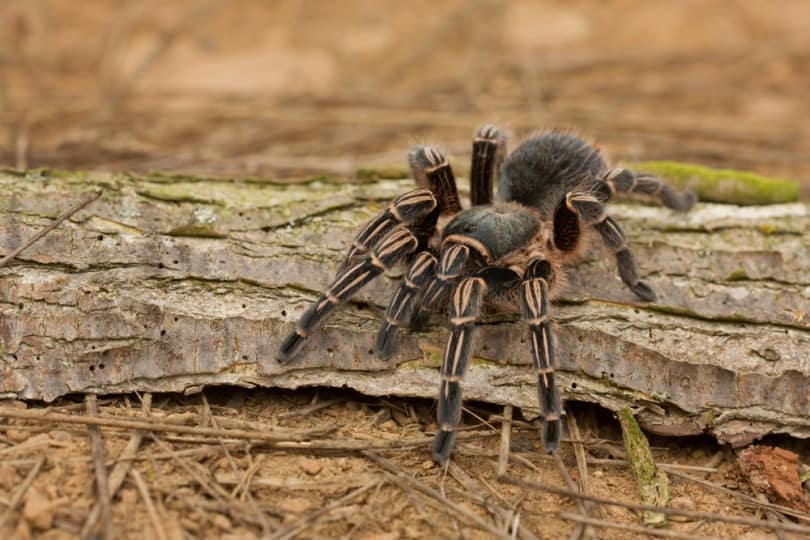
| Species: | Theraposidae |
| Longevity: | 15-25 years |
| Good to own as a pet?: | Yes |
| Legal to own?: | Yes |
| Adult size: | 12-28 cm |
| Diet: | Carnivorous |
The Tarantula is a large and intimidating looking spider and while it can bite and may cause some pain, it has received a lot of unwarranted press because the bite will very rarely prove fatal unless the victim is allergic.
You should be wary of startling a Tarantula because this species of venomous spider has urticating hairs which are bristles that the spider can project towards anything it deems a threat. They can attach to the skin and irritate or they can get caught in the eyes and cause short-term problems.
The size, longevity, and docile nature of the Tarantula have helped make it the most popular species of spider to keep as a pet.
6. Hentz Orb Weaver
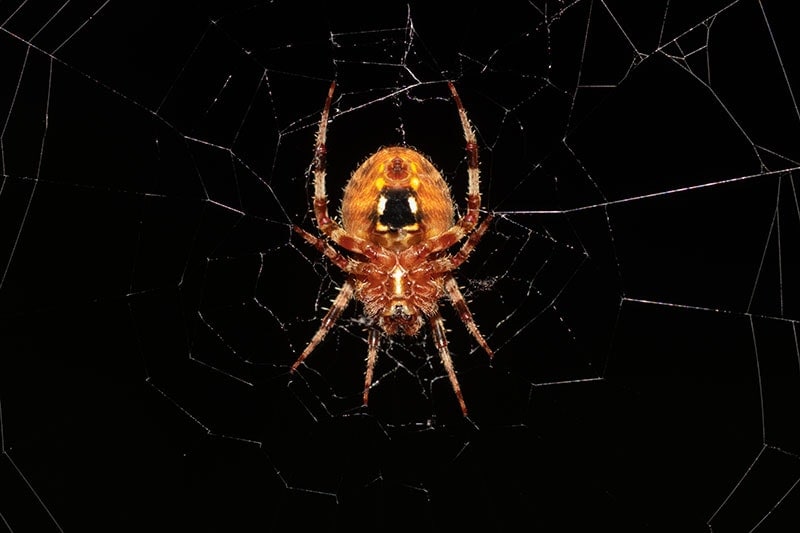
| Species: | Neoscona crucifera |
| Longevity: | 1 year |
| Good to own as a pet?: | Yes |
| Legal to own?: | Yes |
| Adult size: | 6-10 mm |
| Diet: | Carnivorous |
The Hentz Orb Weaver is an arboreal spider, which means that it lives in trees. As the name suggests, it waves orbs and these can be as large as 2 feet in diameter. The markings of the spider vary greatly from one to the next with plain form spiders having very little coloring and the bold form having very bright colors.
In either case, this spider is not dangerous to humans and is actually considered a beneficial species because it eats and controls the number of certain insects. It can make a good pet, especially as it rebuilds its web every night, which is fascinating to watch, but they need a lot of room in which to build.
7. Bridge Orb Weaver
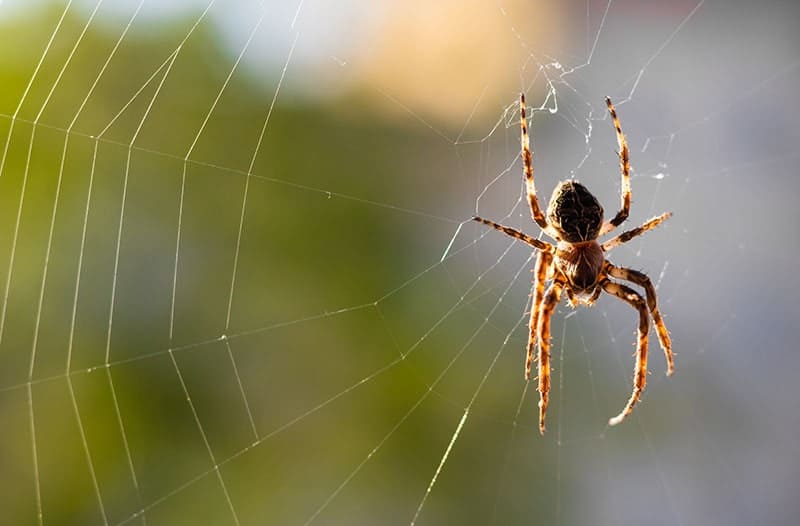
| Species: | Larinioides sclopetarius |
| Longevity: | 1-2 years |
| Good to own as a pet?: | No |
| Legal to own?: | Yes |
| Adult size: | 7-8 cm |
| Diet: | Carnivorous |
The Bridge Orb Weaver is another spider that spins an orb, which is essentially a wheel-shaped web. They get their name from the location of their orbs, which are usually found on bridges over water. The species does have a venomous bite, but its severity is similar to that of a bee and it rarely causes much distress to humans.
8. Banded Garden Spider
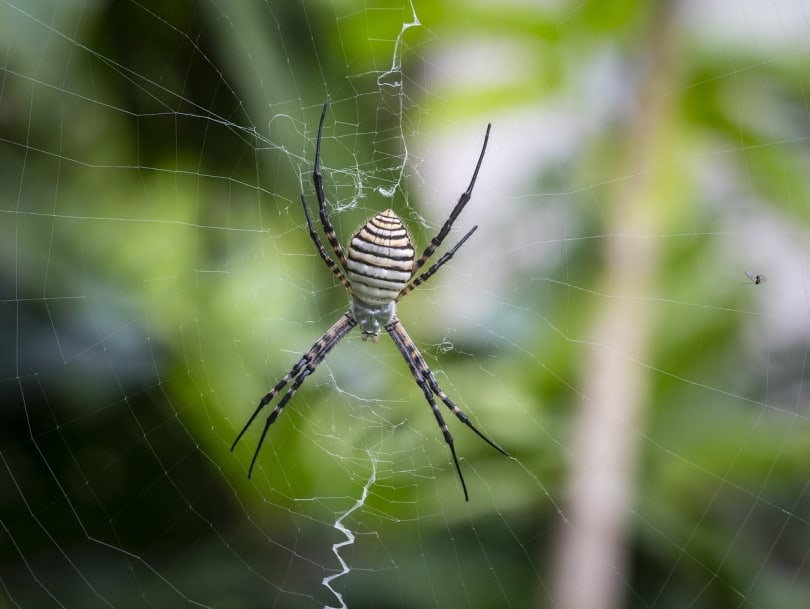
| Species: | Agriope trifasciata |
| Longevity: | 1 year |
| Good to own as a pet?: | Yes |
| Legal to own?: | Yes |
| Adult size: | 5-7 mm |
| Diet: | Carnivorous |
Typically living in tall grass and shrubs, the Banded Garden Weaver is an orb weaver. They catch and eat large insects including wasps and grasshoppers. The species is only likely to bite if it is a female and thinks its egg sac is under threat, and the severity of the bite is said to be similar to that of a wasp sting.
9. Cat Faced Spider
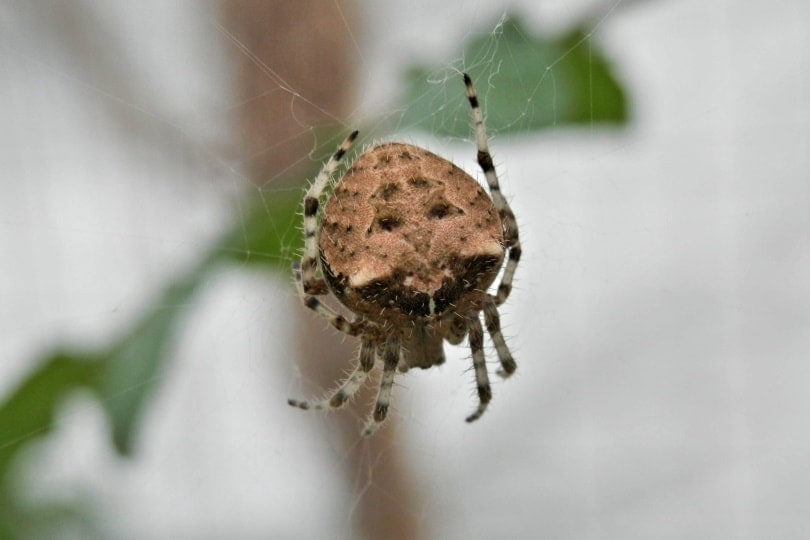
| Species: | Araneus gemmoides |
| Longevity: | 1 year |
| Good to own as a pet?: | Yes |
| Legal to own?: | Yes |
| Adult size: | 5-7 mm |
| Diet: | Carnivorous |
This orb weaver is called the cat-faced spider because it has two lumps on the back of its abdomen that look like a cat’s ears. They do not produce venom that is considered dangerous to humans. They can bite, but this only feels like a small pinch and it is rarely strong enough to puncture the skin.
10. Striped Fishing Spider
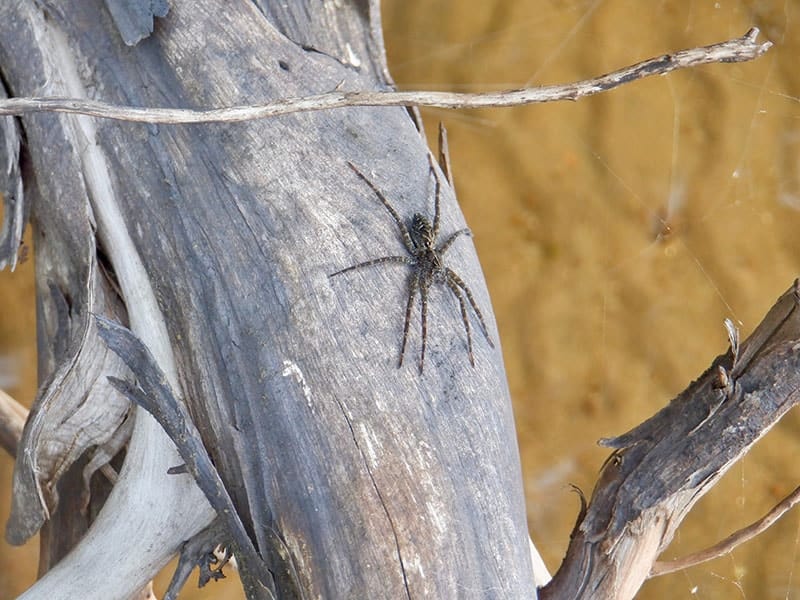
| Species: | Dolomedes scriptus |
| Longevity: | 1-2 years |
| Good to own as a pet?: | Yes |
| Legal to own?: | Yes |
| Adult size: | 12-16 cm |
| Diet: | Carnivorous |
As a large arachnid, the Striped Fishing Spider can measure up to 6 inches in leg span. This fishing species is more likely to run from humans than attempt to bite, and if they do bite, it is no more painful than a bee sting. The spider is light brown and has striped legs and body. It eats small insects and lives on the water.
11. Bold Jumper
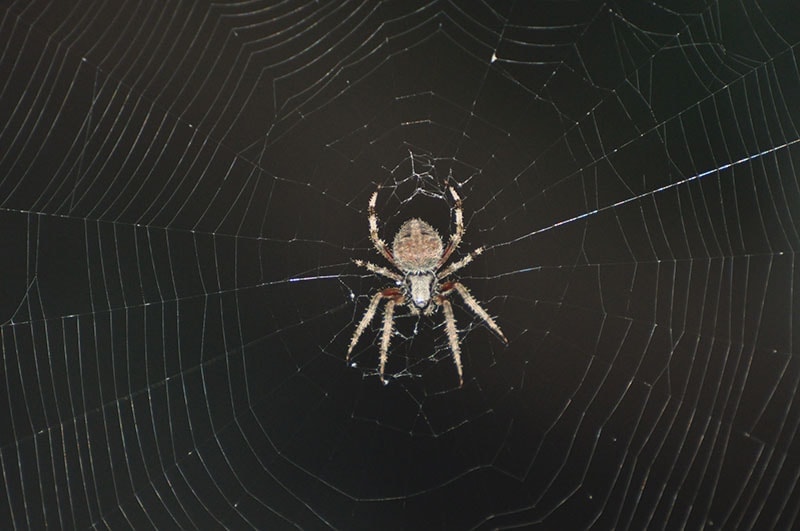
| Species: | Phidippus audax |
| Longevity: | 1-3 years |
| Good to own as a pet?: | Yes |
| Legal to own?: | Yes |
| Adult size: | 4-18 mm |
| Diet: | Carnivorous |
The Bold Jumper is capable of biting but it won’t cause any problems unless you are allergic to the venom. These carnivorous spiders eat small insects and have black bodies with white bands. They have a green mouthpiece and are generally considered harmless to people, preferring to shy away instead.
12. Zebra Back Spider

| Species: | Salticus scenicus |
| Longevity: | 2-3 years |
| Good to own as a pet?: | Yes |
| Legal to own?: | Yes |
| Adult size: | 5-10 mm |
| Diet: | Carnivorous |
Another jumping spider, the Zebra Back will hunt its prey before leaping on it. This small arachnid can jump up to 14 times its own body length, or approximately 10cm. It likes the sun and can be found in gardens but also in houses. The venom is not particularly painful and certainly not life-threatening, but the Zebra Back does have the capability to bite.
13. Apache Jumping Spider
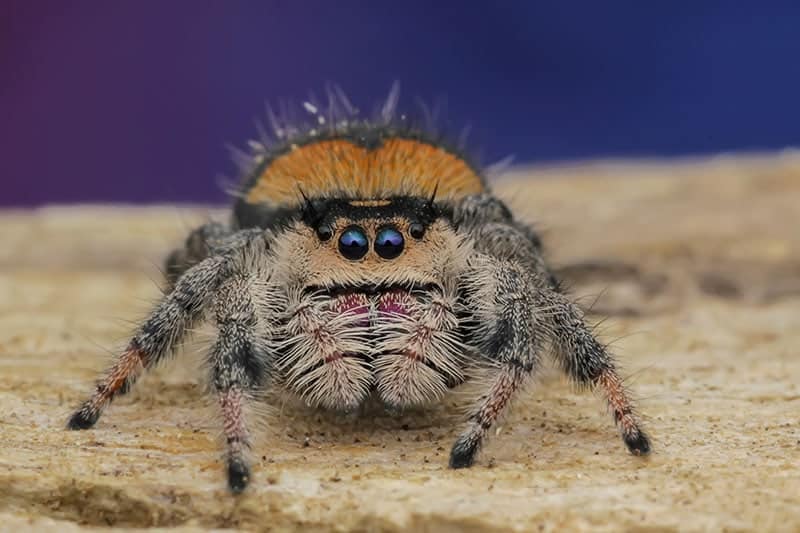
| Species: | Phidippus apacheanus |
| Longevity: | 1 year |
| Good to own as a pet?: | Yes |
| Legal to own?: | Yes |
| Adult size: | 5-22 mm |
| Diet: | Carnivorous |
The Apache Jumping Spider has the unmistakable haunch of a jumping spider when it is stalking or waiting for prey. It is a black spider with a red or orange back. It lives on plants, where it hunts small insects. Like other jumping spider species, it is not considered dangerous to humans and is unlikely to try and bit at all unless you pinch it or sit on it.
14. Contrasting Jumping Spider
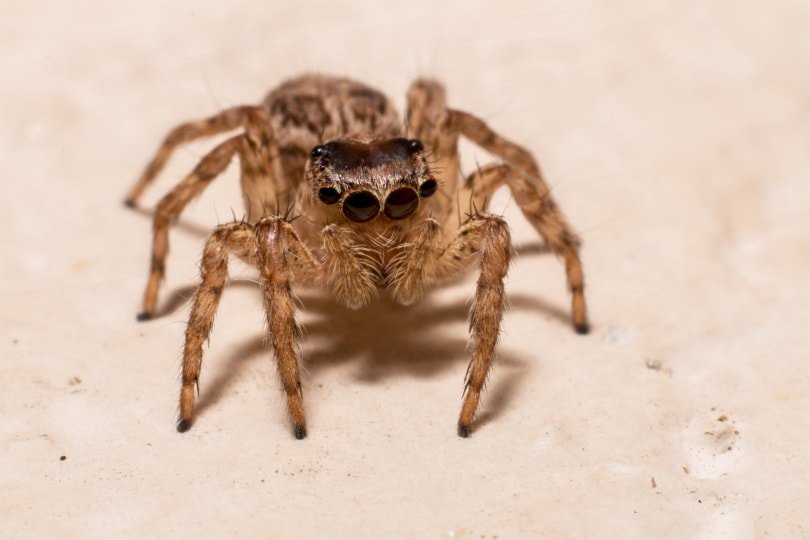
| Species: | Euophrys monadnock |
| Longevity: | 1-2 years |
| Good to own as a pet?: | Yes |
| Legal to own?: | Yes |
| Adult size: | 10-25 mm |
| Diet: | Carnivorous |
Another jumping spider, the Euophrys Monadnock may also be known by the common name, the Contrasting Jumping Spider. It has a black body with red at the top of its back legs and cream tips on all legs. Its diet consists of small insects, which it jumps on to kill.
15. Tan Jumping Spider
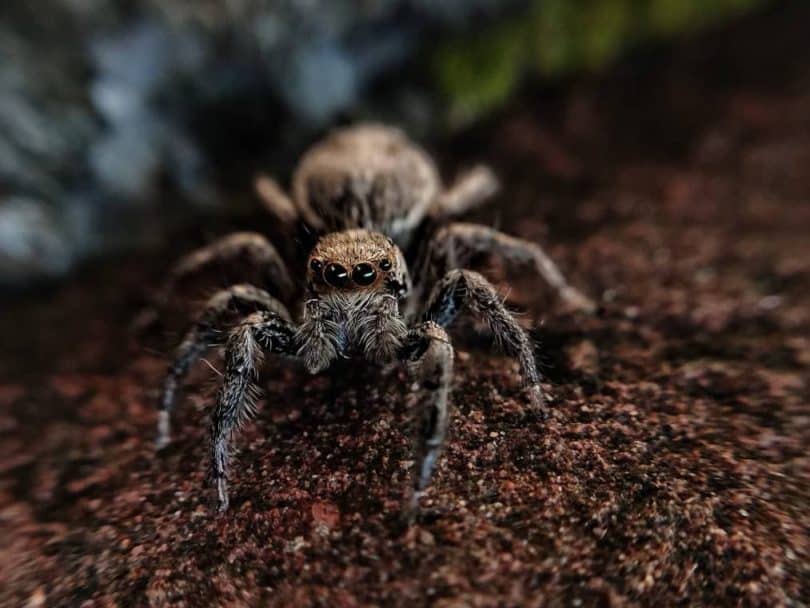
| Species: | Platycryptus undatus |
| Longevity: | 1 year |
| Good to own as a pet?: | Yes |
| Legal to own?: | Yes |
| Adult size: | 8-13 mm |
| Diet: | Carnivorous |
The Tan Jumping Spider does have fangs and it does produce venom but they are not medically relevant, which means that they will not cause harm to people unless a bite victim suffers an allergic reaction. The Tan Jumping Spider can leap a distance equivalent to around 5 times its own body length. When jumping at prey, this species also fires spider silk at its victim to keep it in place and prevent it from making a getaway.
16. Carolina Wolf Spider
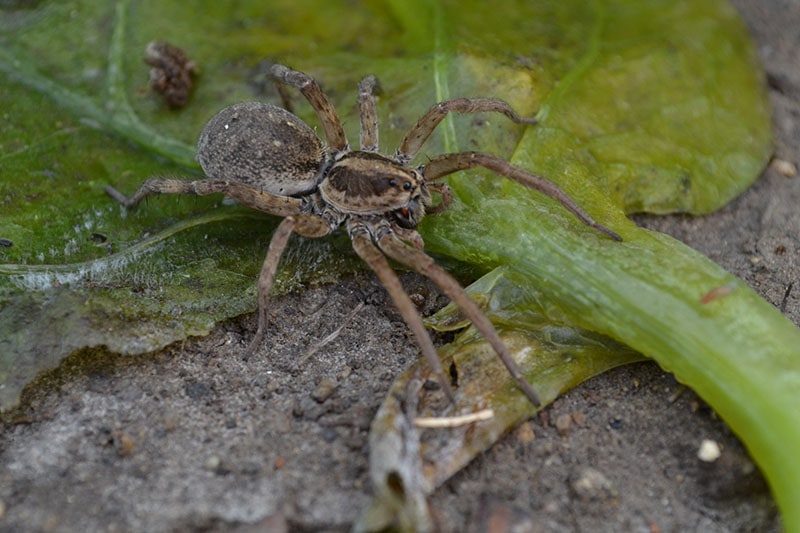
| Species: | Hogna carolinensis |
| Longevity: | 1-3 years |
| Good to own as a pet?: | Yes |
| Legal to own?: | Yes |
| Adult size: | 10-25 mm |
| Diet: | Carnivorous |
As the largest of the wolf spiders, the Carolina Wolf Spider can measure up to 35mm for females and 20mm for males. It is a brown color with brown spots and a darker underbelly. They have excellent eyesight and because they hunt their prey, rather than catch it, they do not spin webs. They can be found in the wilderness but may also be found in gardens, sheds, and even houses.
17. Barn Funnel Weaver
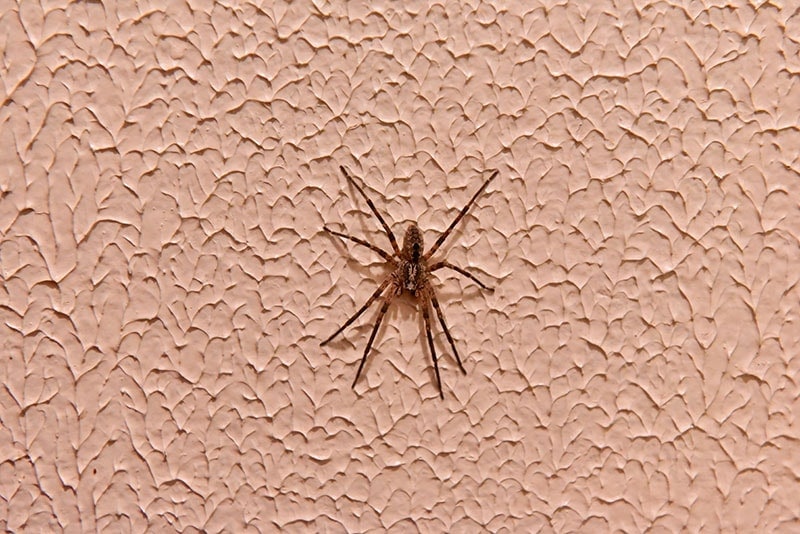
| Species: | Tegenaria domestica |
| Longevity: | 2-7 years |
| Good to own as a pet?: | Yes |
| Legal to own?: | Yes |
| Adult size: | 6-12 mm |
| Diet: | Carnivorous |
The Barn Funnel Weaver is commonly known as the Domestic House Spider in Europe. It is related to the Hobo Spider and it is not known to bite humans or be dangerous in any way. They spin webs to catch prey, and the webs can grow very large if undisturbed. The Barn Funnel Weaver is found in homes, sheds, and other buildings.
18. Hobo Spider

| Species: | Eritagena agrestis |
| Longevity: | 1-3 years |
| Good to own as a pet?: | Yes |
| Legal to own?: | Yes |
| Adult size: | 6-20 mm |
| Diet: | Carnivorous |
The Hobo Spider is sometimes referred to as a funnel-web spider, but should not be confused with the Australian Funnel Web. Despite their nickname of the Aggressive House Spider, Hobo Spiders are not considered aggressive and will not attack unless threatened. Although the spider was once considered to have necrotic venom, advanced study shows that this was likely a different species of spider, and the Hobo Spider is now considered harmless.

Conclusion
There are a lot of species of spider to be found in Colorado including wolf spiders and water spiders. The majority are considered completely harmless even if they do attempt to bite. There are a handful of poisonous spiders in Colorado, however, including the Black Widow and the Brown Recluse, as well as the Tarantula.
- You may also like to read: 7 Spiders Found in Montana (With Pictures)
Featured Image Credit: Milan Zygmunt, Shutterstock
